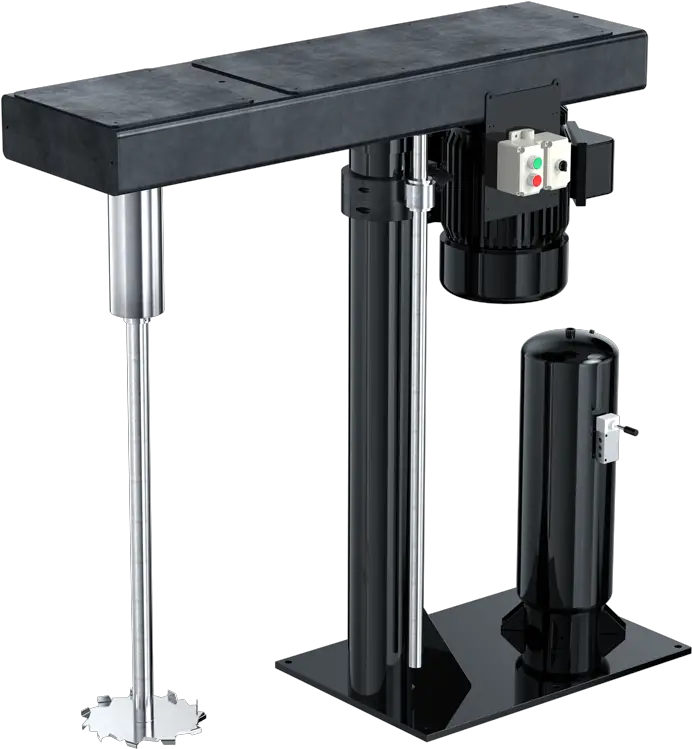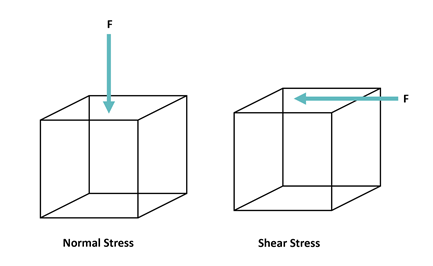A High Shear Disperser (HSD) is a processing unit used to break and distribute agglomerations of solids, gases or miscible/immiscible liquids to create mixtures of a desired homogeneity.

They differ from agitators as High Shear Dispersers have a greater horsepower that allow the liquids, solids or gases to be better incorporated into their desired medium to achieve their desired homogeneity.
Different mixtures will require specific magnitudes of “shear” in order to fit the final mixture specification.
There are many applications that require low shear mixing which require a more gentle rotational force that incorporates the materials to avoid mechanical shear degradation. In the case of solid dispersion, the goal of shear mixing is ultimately to break agglomerations of particles rather than the particle itself.
High Shear Dispersers (HSDs) have a couple of critical features to suit its specific application. These main features are:
The disperser horsepower is simply the power of the disperser, or the work done by the motor on the mixture.
Typically, the disperser equipment will provide information such as vendor tables and correlation factors that will allow you to determine the power requirement.
Regardless, a power requirement for a general mechanical agitator will look like the following formula:

DisperseTech gives a great breakdown of all of the different types of dispersion blades that can be used in dispersers for low and high shear applications.
These blades are often “toothed” to provide the necessary shear force according to its application. The F blade and R blade are the blades with notable high shear applications.
The size of the blade is a critical consideration in relation to the size of the tank; this is referred to as the tank to impeller ratio.
As a rule of thumb, you want this ratio to be 3:1. [4]
Dispersion is the process of breaking down agglomerations of particles to create a more homogeneous mixture of individual particles.
Dispersers are commonly utilized in industrial applications for breaking down lumpy powders and uniformly distributing the powder particles into a liquid solution. Dispersers are also used to create uniform mixtures of immiscible liquids.
For example, a pourable pharmaceutical formulation for treating sunburn will most likely require a disperser to break down and distribute a powdered preservative to achieve a high degree of homogeneity in the mixture.
To understand the function of a High Shear Disperser (HSD), or High Shear Mixer as it is also called, it is important to understand what “shear” is.
Shear is a form of stress which acts parallel to the surface of the object it is applied to as seen below. The SI unit Pascal, is the same unit as pressure (force per unit area).
This is contrasted by normal stress which acts perpendicular to the surface of the object it is applied to but this is out of the scope of this article.

Shear stress is often explained by the force effect on an infinitesimal surface element of a fluid.
As the force is imparted on the fluid, a velocity gradient is created along its profile. The relative velocity of the fluid where impact is made by the acting force (boundary layer) is zero according to the “no slip condition”.
This velocity gradient or velocity profile between the boundary layer and top of the fluid determines the magnitude of shear imparted by the acting force. The greater the difference in this velocity profile, the greater the shear but is also dependent on the viscosity of the fluid for Newtonian fluids.

High Shear Dispersers (HSDs) have applications in industries with physical dispersion requirements or reactive/chemical dispersion requirements.
Physical dispersion refers to the dispersion that is non-chemically reactant upon dispersion. The material that is dispersed can either be a liquid, solid or gas
Typically, solid powders are dispersed within fluids using high speed dispersers to generate a uniform mixture, however liquids with large differences in viscosities may require high shear dispersers to fully incorporate them.
Gas dispersion typically occurs into liquids where the gas bubbles are mixed with a high intensity impeller to be suspended in the fluid, and have major applications in the wastewater processing industry.
Chemical dispersion refers to dispersion that directly results in a chemical reaction that takes place. This is a major application of high shear dispersers which often utilize the high shear dispersers to catalyze reactions with lower reaction rates.
High Shear Dispersers (HSDs) play important roles in industries that require high speed mixing of components that do not easily mix and require a high level of homogeneity as a final product. Some major industries would include fine chemicals, paints, ink, pharmaceuticals and adhesives.
The paint industry is a great example of how HSDs are an incredibly important component to a quality final product. Paint quality depends on the rate of high shear dispersion that is performed in order to incorporate the pigment, resins and solvents.
This mixing process is optimized in order to ensure a consistent batch, and involves taking into consideration the disperser power delivered, the order of raw material addition, requirement of shear, and velocity profile.